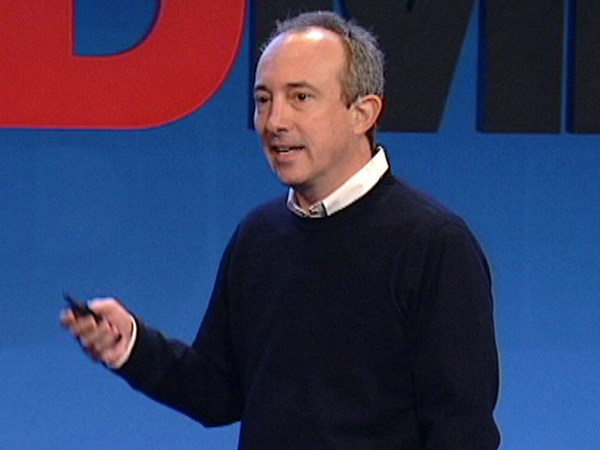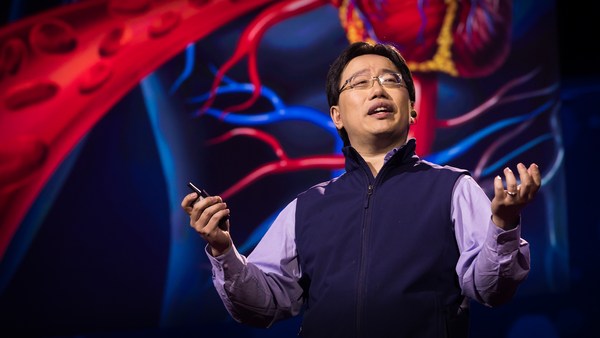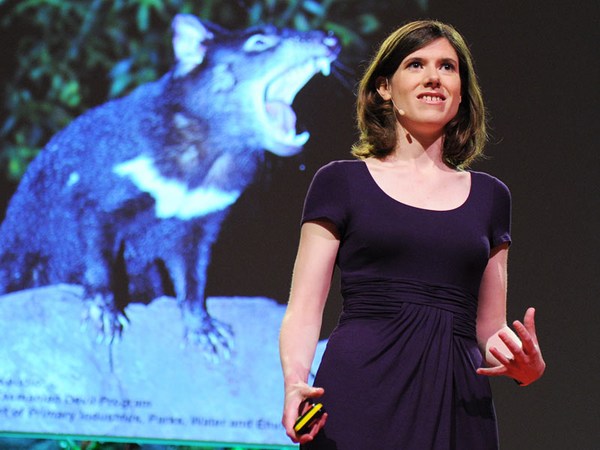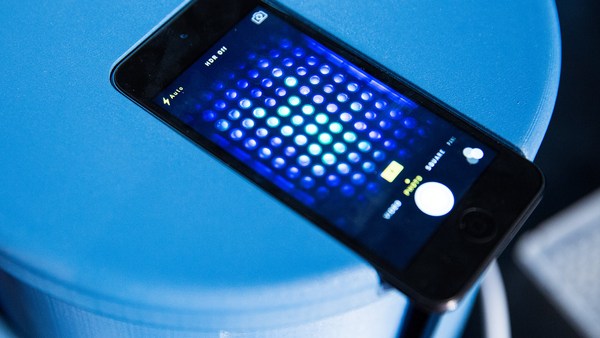I'm a doctor. And one of the hardest things that I have to do in my profession is when I have to tell a patient, "You have cancer." Raise your hand if someone close to you has been diagnosed with cancer. Cancer is something that touches all of us. I've personally lost both of my grandmothers and three of my aunts to cancer. The most recent member of my family to be diagnosed with cancer is my wonderful mother-in-law, Norma, seen here with my husband. Norma was visiting us in Baltimore last year, and she was feeling something wasn't quite right. A couple of weeks later, life changed completely for Norma: She was diagnosed with advanced ovarian cancer. Norma's not alone. This very day, 4,828 people will be diagnosed with cancer in the United States. And if we look globally, 17 million people will be diagnosed with cancer this year, and 9.6 million of them will die. How can we change this? One of the most important ways of improving survival is detecting cancer earlier. The reason for that is that the later you pick up a cancer, the smaller your chances of curing it. If we look at colon cancer, it starts in the bowel, then it moves to the lymph nodes, and ultimately it metastasizes to the lungs and the liver. If your patients are diagnosed when the cancer has spread to the lungs and the liver, they have a 14% chance of surviving. But if you could catch it just a little bit earlier, when it was still in the lymph nodes, their survival goes from 14% to 71%. And if you could pick it up even earlier, when it was still in the colon, your patients have a 90% chance of surviving. So how can we detect cancer earlier? Well, I'd like to share some research that our group is doing, which I think is really exciting. We know that tumors release tumor DNA into the blood. Imagine if we could detect that cancer DNA - we could potentially detect cancers earlier. What a simple concept - detecting tumor DNA in the blood. But of course, science and life is never that simple. And for great endeavors, there are always multiple challenges that you need to overcome. And whether you're climbing Everest or trying to diagnose cancer earlier, you have to overcome these challenges. The first challenge that we faced in trying to diagnose cancer earlier was a technical one. And that is that the amount of tumor DNA in the blood is tiny: one to five mutant fragments among a sea of 10,000 normal fragments. I'm part of a team at Johns Hopkins University led by Bert Vogelstein, Ken Kinsler, and Nick Papadopoulos, and our goal is to detect cancers earlier. The team has worked on this for many, many years and ultimately came up with a novel technique which we call "safe sequencing." And using this technique, what we do is we take DNA and we attach a unique identifier or barcode to the DNA before it's sequenced. Using this technology, we're now able to identify a single mutant template in the blood when it's surrounded by 10,000 normal templates. So we've overcome our first challenge. But can it actually detect cancer? And we looked at 220 patients with pancreatic cancer. Now, pancreatic cancer is a devastating disease. It has the worst survival of any cancer, with just over 8% of patients diagnosed with it ultimately surviving. Imagine if we could identify pancreatic cancer earlier - what an incredible difference this could make to those patients. So did it work? The answer is yes. We were able to identify tumor DNA in the bloodstream in 30% of the patients with pancreatic cancer. So we thought, "That's good." But the question we asked is "How can we do better?" Another challenge that we need to overcome. So we went back to the drawing board, and we came up with a novel concept, which was to combine tumor DNA with other tumor markers in such a way that we were able to greatly increase the number of patients with pancreatic cancer that we could identify from 30% to 64%, while still ensuring that healthy patients were not misdiagnosed as having cancer. One of the really exciting things about tumor DNA is that the mutations that are present in pancreatic cancer are also present in multiple other cancers. So what does this mean? It means that potentially, you could identify many different types of cancers with a single blood test. And that's what we try to do. So building on this concept, our group developed a test which would screen for eight common types of cancers: cancer of the esophagus, cancer of the stomach, the colon, the pancreas, the liver, breast cancer, lung cancer, and ovarian cancer. We called it CancerSEEK. And we evaluated it in just over 1,000 individuals who had one of those eight different types of cancers as well as 800 healthy individuals. And it worked. We were able to identify every cancer type. The number of patients that we were able to identify depended on the type of cancer that they had. So we were able to identify 33% of the patients with breast cancer, 72% of the patients with cancer of the pancreas or stomach cancer, and 98% of the patients who had liver cancer or ovarian cancer. Overall, CancerSEEK identified a median of 70% of the eight different types of cancers. One of the most important findings in this study is that five of the eight cancers have no screening test. CancerSEEK identified between 69% to 98% of these five cancers. (Applause) If we look at these eight common cancers, they account for 60% of the deaths due to cancer in the United States. Identifying them earlier will save lives. We're currently evaluating how good CancerSEEK is at identifying cancer earlier in 10,000 healthy individuals who have no symptoms and no history of cancer. There will be more challenges ahead. But our hope is that in the future, we'll have a single blood test which can identify multiple cancers, and we'll save lives by detecting cancers earlier, ultimately helping ensure people such as Norma have the very best chance of surviving and enjoying life to the full. Thank you. (Applause)
Related talks

David Agus: A new strategy in the war on cancer

Jimmy Lin: A simple new blood test that can catch cancer early

Elizabeth Murchison: Fighting a contagious cancer

Jorge Soto: The future of early cancer detection?

William Li: Can we eat to starve cancer?
